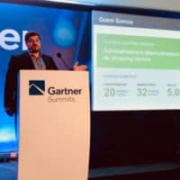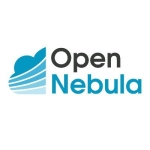What is our primary use case?
We use Prism Pro and Prism Central to centrally manage everything. It comes with a playbook and we use that to alter some procedures.
How has it helped my organization?
Nutanix has integrated storage which gives us a separate storage unit. That has dramatically decreased our rack space. We used to have a twofold rack on this solution.
It is an integrated solution with virtualization, storage, and network all together. We used to have each of those components from different vendors and we had to manage them separately. Now, we can centrally manage all of them. We can configure most things from a central location, and the automation enables us to accomplish a lot of things. We save a lot of time as a result.
Overall, the solution has dramatically improved the way our organization functions. We used to have IBM servers and Nimble Storage but there was no central management so we had to manage each host individually. We also had to manage the storage separately. With Nutanix, everything is built-in, the storage and the host together. We can do everything from one central location. That makes things very simple.
The TCO is really good and the administration is very simple.
What is most valuable?
The central management aspect of Prism, as well as its playbook functionality, called X-Play, are very helpful for us.
We can use the event trigger in the playbook and then specific procedures are run automatically for us. That saves us admin time. Using X-Play is simple. In three steps you can define things and there is also a wizard to guide you. There's a lot of automation you can potentially do, but if you try to do something several times you might create some problems with your automation. The wizard is the simplest way to automate and the resulting automation saves us time.
We are quite a small environment. We only have two chassis and eight hosts, four hosts in each chassis, and we centrally manage them. The performance is quite good and responsive.
Overall, everything is simple, including the upgrade feature. Everything is built in one place with a single pane of glass for management.
What needs improvement?
We use Nutanix only for our dev and test environments. Our production environment is VMware, and that is totally separate. But we do transfer data between them. That's a challenge because we need to frequently bring the production data into our test environment and that's a big transfer. If we could do a cross-storage transfer, like a transfer from NetApp or Nimble Storage into Nutanix with automation, that would greatly help us.
For how long have I used the solution?
I've been using the solution for a little over four years. I'm the infrastructure architect and I design the solution.
What do I think about the stability of the solution?
The stability of the solution really surprised me when I first started using it. It exceeded my expectations. I have been impressed.
Just think about the fact that we managed 15 hosts individually before, and we had to manage the storage separately. The maintenance of it was really difficult for us. We had two dedicated environment admins, and now we are down to one, a dedicated Nutanix admin. He is fully in charge of the solution and its maintenance. He also supports users and does troubleshooting for them. It has saved us lots of time that we can put into user support.
What do I think about the scalability of the solution?
From my understanding, the solution can very easily be scaled up. The scalability should be really good.
Nutanix Cloud Manager is the next version of Prism Pro. If we renew Nutanix next year, we will use NCM. It is a better version of Prism Pro and I'm looking forward to that.
How are customer service and support?
Technical support is quite good. We have a heartbeat sent to Nutanix, so when we open a support case, they normally respond really quickly and provide good suggestions as well.
How would you rate customer service and support?
Which solution did I use previously and why did I switch?
We used IBM with Nimble. We also used Cisco UCS with NetApp. UCS provides central management for their platform, but we had to manage storage separately. We had to manage each host individually. That was a lot of duplicated work because we had more than 15 hosts.
At first, we moved our environment to Azure, but we found that it was too costly. That's the reason we ended up with the Nutanix solution, and we moved everything back in-house again. Azure is a totally different environment. It's a cloud solution, but we have really lengthy applications and Azure didn't really meet our requirements. We ended up with way more VMs than we required, and that really brought the cost up.
After a year and a half on Azure, we explored the Nutanix solution. We decided to use it and moved some 200 VMs back.
How was the initial setup?
The initial setup was pretty straightforward. The only thing that was confusing was configuring the IP address for the management part. After that, everything was fine and really simple. I'm still confused about the IP address part. I don't think that's related to Prism or NCM. It's just the Nutanix solution.
Maintenance is required because from time to time they release new firmware that may contain new features and bug-fixes. Prism has built-in upgrade features that make upgrades pretty simple too. It's really simple compared to UCS.
What about the implementation team?
We brought in a Nutanix technician from Toronto, the first time. The second time, we hired a third-party consultant to come in. They were both okay. Their knowledge of it was really good. Both of them were still confused about the IP config. The initial problem was that we have a lot of events. Our internal network is quite complicated. That might have confused them.
On our side, there were three of us involved. I'm mainly on the infrastructure side and take care of the platform storage network. We also have a dedicated Nutanix admin, and one other. We spent almost a day with the consultant.
What's my experience with pricing, setup cost, and licensing?
Compared to UCS and the NetApp storage, Nutanix is actually cheaper. It also has a lot of built-in features, most of which we are using, and we added a few extras.
Which other solutions did I evaluate?
We reevaluated UCS, but UCS still didn't come with storage. We thought that the built-in storage of the Nutanix solution, and the single pane glass management, would greatly help us. It would reduce our administration time a lot and allow the programmers themselves to provision VMs. That would also help us.
What other advice do I have?
Be sure you collect your requirements accurately and be sure to consider growth. We didn't do that at all and, about eight months after we bought the first one, we ran out of resources and had to add a second one. So carefully estimate your growth and give yourself a lot of room to grow, including space and CPU capabilities.
Disclosure: PeerSpot contacted the reviewer to collect the review and to validate authenticity. The reviewer was referred by the vendor, but the review is not subject to editing or approval by the vendor.















